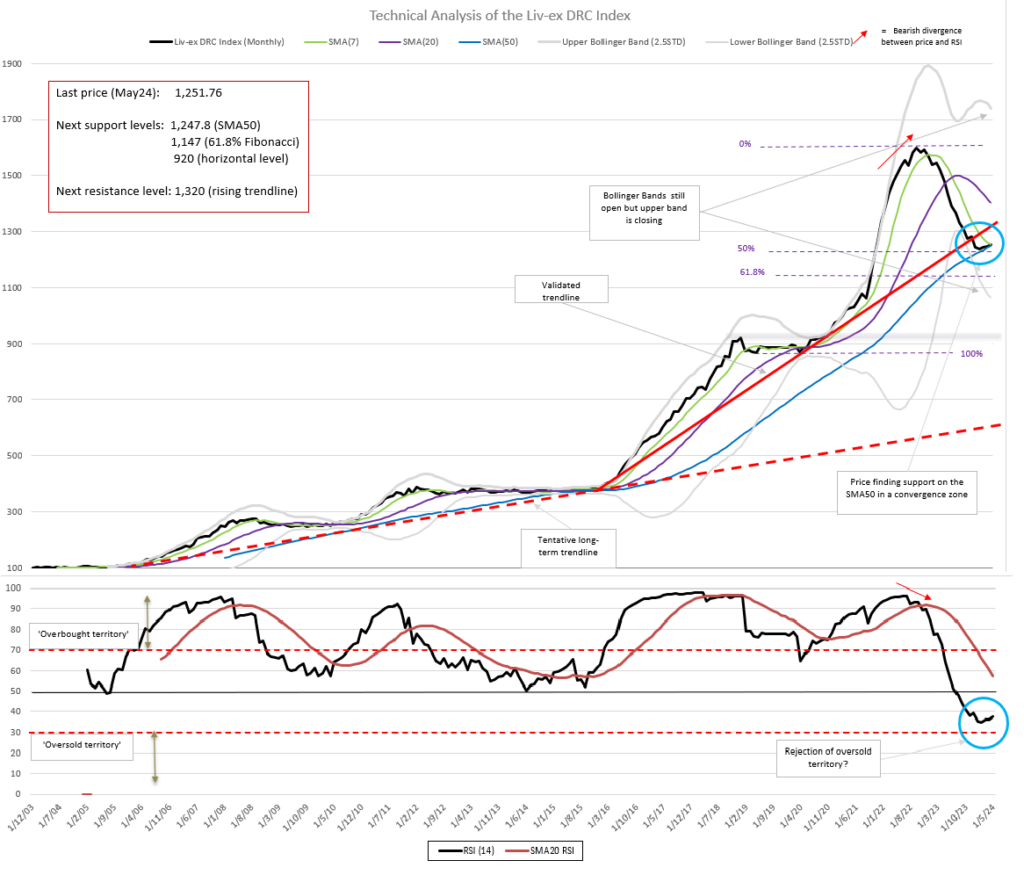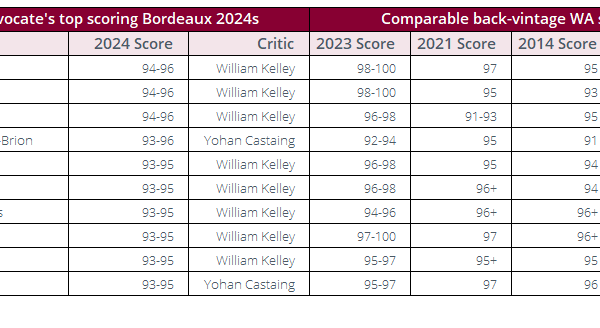- Over the past month, prices of Domaine Romanée-Conti have risen.
- If prices continue to rise, the end of the corrective period may be insight.
- Should prices fall below the SMA50, however, little support is available.
As detailed in our June market report, the Liv-ex Fine Wine 1000 recorded its 19th consecutive negative month in May 2024, falling below its Simple 50-Month Moving Average (SMA50). While the market may still be finding its floor, technical analysis suggests that, for some brands, there may be light at the end of the tunnel.
So far this year, Domaine de la Romanée-Conti, Romanée-Conti Grand Cru is the most traded Burgundy by value on Liv-ex. Trades of this, and the seven other wines produced by DRC, comprised 13.3% of traded value in the region. We have constructed a price index of Domaine Romanée-Conti using Mid Prices of the 10 most recent physical vintages of the six red wines they produce.
Technical analysis
Since its inception in December 2003, the Liv-ex DRC Index has increased by over 1000%. Prior to April 2020, three main peaks are identifiable, each followed by minimal correction phases. During the period between April 2020 and November 2023, the index grew sharply by 79.1%. The current correction phase has cut significantly deeper than in previous cycles — prices have already retraced 50% of the initial move up. In the past three months, however, the index has moved slightly upwards.
The SMA50 has climbed steadily since March 2016. Its continual growth preserves the current medium-term bullish trend. The SMA50 is considered an important technical support, preventing prices from dropping too sharply. This is well-illustrated by the convergence of the SMA50 and index during the corrective period of 2015.
The 7-Month Simple Moving Average has fallen since March 2023, indicating a bearish trend in the short-term. In the past month, the trend line has levelled out slightly, suggesting slightly decreased interest in selling.
This is similarly reflected in the Relative Strength Index (RSI), used to measure the speed and magnitude of price movement. The RSI has been moving down since early 2022, and currently sits below 50. Prior to crossing this threshold in late 2023, the index has not fallen into bearish territory. While the RSI has fallen close to 30, the level at which an asset is considered oversold, we have seen a slight rise in recent months. If this rise continues, we may infer a reversal of the index’s downward trend. If prices have not yet found their floor, however, the RSI will decrease once again.
Though the Bollinger Bands remain wide, the upper band has closed slightly, indicating lower price volatility. In 2023, prices fell close to the lower band, and have since, to a small degree, bounced closer to the middle band. Coupled with the upward movement of the RSI, this may signal incoming price movements.
Future predictions
The future direction of the Index depends on how the price reacts against the SMA50. If the price breaks below the SMA50, there is little support available beneath it. Fibonacci mathematics would suggest that if this break occurs, prices are likely to fall to the 61.8% retracement level at 1,147 and potentially further down towards the long-term horizontal support at 920.
Technical analysis suggests that we may consider the corrective period potentially over only if the price breaks the rising upward trendline. Price action in June and July will determine the outcome — careful monitoring of price movements and the RSI will reveal whether this uptick is a false positive, or an indication of an approaching trend reversal.
As a Liv-ex member on Gold or Black package, you can use the Technical Analysis Tool to forecast future price changes and increase the probability of making more profitable trading decisions. You’ll find an explanation of the techniques and further resources and training links in this post; How to predict fine wine prices.





